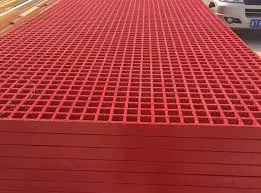
-
 Afrikaans
Afrikaans -
 Albanian
Albanian -
 Amharic
Amharic -
 Arabic
Arabic -
 Armenian
Armenian -
 Azerbaijani
Azerbaijani -
 Basque
Basque -
 Belarusian
Belarusian -
 Bengali
Bengali -
 Bosnian
Bosnian -
 Bulgarian
Bulgarian -
 Catalan
Catalan -
 Cebuano
Cebuano -
 China
China -
 China (Taiwan)
China (Taiwan) -
 Corsican
Corsican -
 Croatian
Croatian -
 Czech
Czech -
 Danish
Danish -
 Dutch
Dutch -
 English
English -
 Esperanto
Esperanto -
 Estonian
Estonian -
 Finnish
Finnish -
 French
French -
 Frisian
Frisian -
 Galician
Galician -
 Georgian
Georgian -
 German
German -
 Greek
Greek -
 Gujarati
Gujarati -
 Haitian Creole
Haitian Creole -
 hausa
hausa -
 hawaiian
hawaiian -
 Hebrew
Hebrew -
 Hindi
Hindi -
 Miao
Miao -
 Hungarian
Hungarian -
 Icelandic
Icelandic -
 igbo
igbo -
 Indonesian
Indonesian -
 irish
irish -
 Italian
Italian -
 Japanese
Japanese -
 Javanese
Javanese -
 Kannada
Kannada -
 kazakh
kazakh -
 Khmer
Khmer -
 Rwandese
Rwandese -
 Korean
Korean -
 Kurdish
Kurdish -
 Kyrgyz
Kyrgyz -
 Lao
Lao -
 Latin
Latin -
 Latvian
Latvian -
 Lithuanian
Lithuanian -
 Luxembourgish
Luxembourgish -
 Macedonian
Macedonian -
 Malgashi
Malgashi -
 Malay
Malay -
 Malayalam
Malayalam -
 Maltese
Maltese -
 Maori
Maori -
 Marathi
Marathi -
 Mongolian
Mongolian -
 Myanmar
Myanmar -
 Nepali
Nepali -
 Norwegian
Norwegian -
 Norwegian
Norwegian -
 Occitan
Occitan -
 Pashto
Pashto -
 Persian
Persian -
 Polish
Polish -
 Portuguese
Portuguese -
 Punjabi
Punjabi -
 Romanian
Romanian -
 Russian
Russian -
 Samoan
Samoan -
 Scottish Gaelic
Scottish Gaelic -
 Serbian
Serbian -
 Sesotho
Sesotho -
 Shona
Shona -
 Sindhi
Sindhi -
 Sinhala
Sinhala -
 Slovak
Slovak -
 Slovenian
Slovenian -
 Somali
Somali -
 Spanish
Spanish -
 Sundanese
Sundanese -
 Swahili
Swahili -
 Swedish
Swedish -
 Tagalog
Tagalog -
 Tajik
Tajik -
 Tamil
Tamil -
 Tatar
Tatar -
 Telugu
Telugu -
 Thai
Thai -
 Turkish
Turkish -
 Turkmen
Turkmen -
 Ukrainian
Ukrainian -
 Urdu
Urdu -
 Uighur
Uighur -
 Uzbek
Uzbek -
 Vietnamese
Vietnamese -
 Welsh
Welsh -
 Bantu
Bantu -
 Yiddish
Yiddish -
 Yoruba
Yoruba -
 Zulu
Zulu
frp water tank
The Importance of FRP Water Tanks A Comprehensive Overview
In today's rapidly advancing world, the need for effective water storage solutions has become increasingly crucial. Among the various materials available for constructing water tanks, Fiberglass Reinforced Plastic (FRP) has emerged as a popular choice due to its unique properties and benefits. This article delves into the significance of FRP water tanks, exploring their advantages, applications, and the reasons why they are becoming a staple in various industries.
Understanding FRP Material
FRP, or Fiberglass Reinforced Plastic, is a composite material made from a polymer matrix reinforced with fibers, typically glass. This combination offers remarkable strength while keeping the overall weight of the material low. The fibers lend rigidity and structural integrity, while the polymer provides resistance to moisture, chemicals, and extreme temperatures. These characteristics make FRP tanks particularly suitable for water storage.
Advantages of FRP Water Tanks
1. Corrosion Resistance One of the most significant advantages of FRP water tanks is their resistance to corrosion. Unlike steel or concrete tanks that can degrade over time due to rust or chemical reactions, FRP tanks maintain their integrity, ensuring that the stored water remains uncontaminated.
2. Lightweight and Easy to Install FRP tanks are considerably lighter than their concrete or metal counterparts. This feature not only makes them easier to transport but also simplifies the installation process. They can be installed in locations where heavier tanks may pose logistical challenges.
3. Durability and Long Lifespan With proper maintenance, FRP water tanks can last for decades. Their ability to withstand harsh environmental conditions, including UV radiation and extreme temperatures, contributes to their longevity. This durability leads to reduced replacement costs over time.
frp water tank

4. Versatile Designs FRP tanks are highly customizable, making them suitable for a wide range of applications. They can be designed in various shapes and sizes to meet specific needs, whether for residential, commercial, or industrial uses.
5. Cost-Effectiveness Although the initial investment for FRP tanks might be higher than traditional materials, their long-term durability and maintenance-free nature result in lower overall costs. Businesses and homeowners alike can benefit from the economic advantages of investing in FRP water storage solutions.
Applications of FRP Water Tanks
FRP water tanks are employed in diverse sectors, showcasing their versatility. They are commonly used in
- Agriculture Farmers utilize FRP tanks for irrigation purposes, storing harvested rainwater, or housing nutrients for fish farming. - Industrial Operations Industries rely on these tanks for chemical storage, wastewater management, and cooling water applications due to their chemical resistance. - Residential Use Homeowners increasingly turn to FRP tanks for their water supply systems, ensuring safe and reliable access to clean water. - Fire Protection Systems FRP tanks are often integrated into fire protection systems, providing reliable water sources for firefighting efforts without the risk of contamination.
Conclusion
In summary, FRP water tanks are redefining the standards for water storage solutions. Their remarkable properties, including corrosion resistance, lightweight nature, and durability, make them ideal for various applications. As awareness about efficient and safe water storage continues to grow, FRP tanks will likely play an even more significant role in addressing the water challenges faced by many sectors today. Investing in FRP technology is not just a practical choice; it's an investment in the future of sustainable water management. The significance of FRP water tanks cannot be overstated, as they provide an innovative solution to meet the growing demand for high-quality water storage in an ever-evolving world.
Latest news
-
Exploring the Benefits of Top Hammer Drifter Rods for Enhanced Drilling PerformanceNewsJun.10,2025
-
High-Precision Fiberglass Winding Machine for GRP/FRP Pipe Production – Reliable & Efficient SolutionsNewsJun.10,2025
-
FRP Pipes & Fittings for Shipbuilding - Corrosion-Resistant & LightweightNewsJun.09,2025
-
Premium FRP Flooring Solutions Durable & Slip-ResistantNewsJun.09,2025
-
Premium Fiberglass Rectangular Tanks Durable & Lightweight SolutionNewsJun.09,2025
-
Tapered Drill String Design Guide Durable Performance & UsesNewsJun.09,2025









